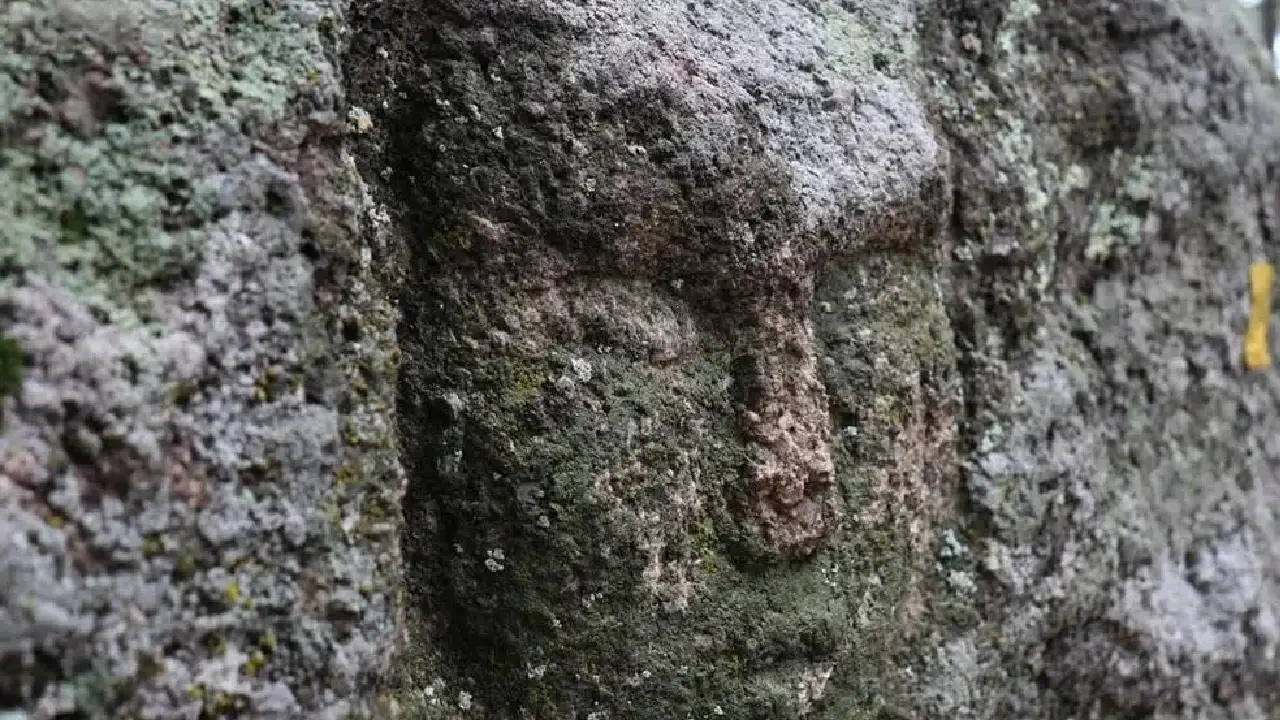A remarkable archaeological discovery has emerged from the heart of Kazakhstan. During a routine inspection as part of the Orman campaign, employees of the Regional Emergency Situations Department stumbled upon a stone carving depicting a human face. This intriguing artifact, found in the Sandyktau district, offers a tantalizing glimpse into the lives and beliefs of Bronze Age civilizations in Central Asia.
The carving, measuring 27 by 21 cm, is etched onto the face of a granite boulder and is oriented west-southwest. Alongside the human face, a poorly preserved image of a deer and a nearby rock ceiling suggest the presence of a ritual complex. Sergey Yarygin, a leading archaeologist from the Alkey Margulan Institute of Archaeology, believes the carving likely dates back to the Bronze Age. He described the face as having large eyes, a long straight nose, and protruding lips, noting that similar carvings have been found in Bronze Age sites across Central Asia and Eastern Europe.

However, the exact period of the artifact remains
a subject of debate. While analogous images have been discovered in early Iron Age southern Siberia and medieval Turkic cultures, the carving’s precise dating remains uncertain. This ambiguity presents an exciting opportunity for further research and exploration.
The discovery of the stone carving was made by Nursultan Ashkenov and Akhmet Zaripov, employees of the Sandyktau district fire service. The Emergency Situations Department has since taken the artifact under its protection. Aset Zhangozhin, head of the Emergency Situations Department of Sandyktau district, expressed his pride and satisfaction in making such an important discovery while carrying out their primary responsibilities. He believes that this achievement will not only benefit their district but also have a positive impact on the entire country.
Kazakhstan’s rich archaeological landscape has yielded numerous significant finds in recent years. 1 In addition to the Akmola Region discovery, the Pavlodar Region has seen important archaeological work at the Koktas complex. 2 Yarygin emphasized the broader implications of these discoveries for understanding ancient civilizations in Central Asia. 2 He stated that Kazakh archaeology not only enriches the scientific world but also reveals the main stages of the ancient and medieval development of Kazakh society.

Leave a Reply